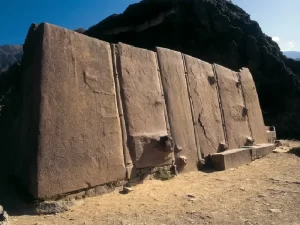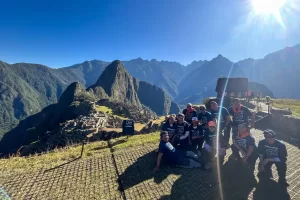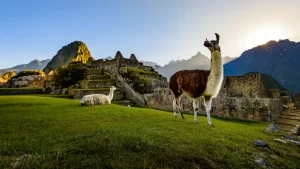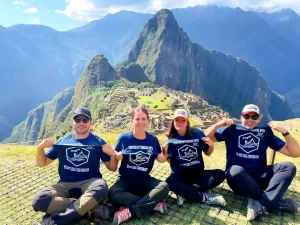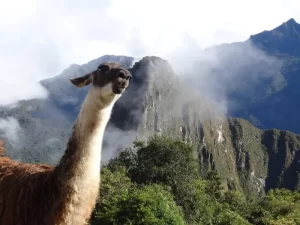Contents
- 1 Etymology and Cosmogonic Meaning
- 2 Civilization Roots: Beyond Tahuantinsuyu
- 3 Pachamama in the Andean Cosmological Structure
- 4 The Pachamama Ritual Calendar
- 5 Contemporary Rituals and Current Practices
- 6 Iconography and Symbolic Representations
- 7 Pachamama and Ancestral Ecology
- 8 Sacred Geography: Spaces of Veneration
- 9 Pachamama in Traditional Medicine
- 10 Impact on Contemporary Ecological Movements
- 11 Authentic Tourism Experiences
- 12 Respectful Visitor Protocols
- 13 Pachamama and Andean Astronomy
- 14 Contemporary Philosophical Reflection
A Profound Approach to the Most Revered Divinity of the Andes
At the heart of Andean spirituality lies Pachamama, Mother Earth, whose presence transcends religious boundaries to become the very foundation of existence. More than a deity, Pachamama represents the living totality that sustains, nourishes and welcomes all beings of the Andean cosmos. Her cult, which dates back to the dawn of civilization in the Andes, survives to this day as a testimony to the profound ecological wisdom of the native peoples.
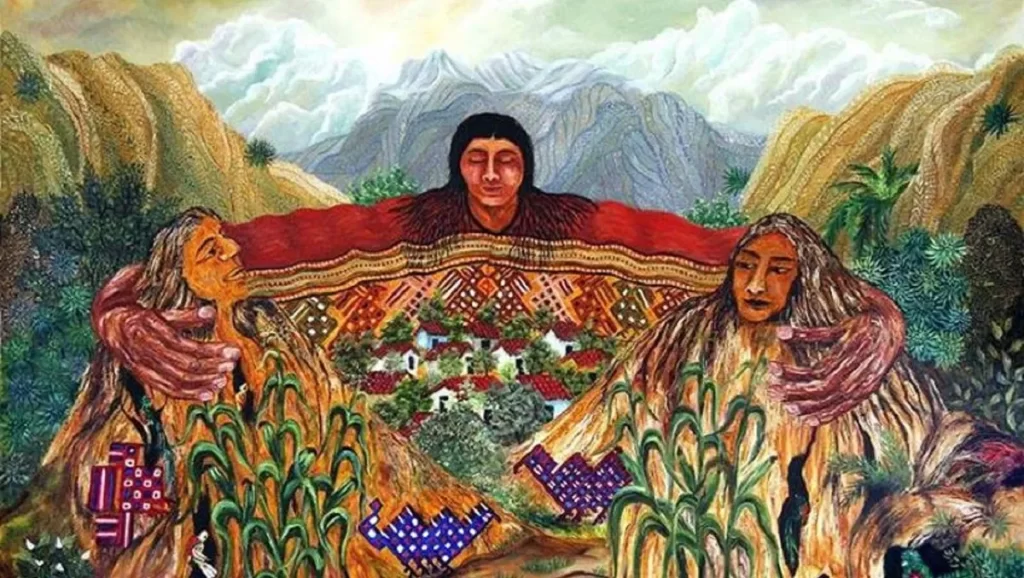
Etymology and Cosmogonic Meaning
The term Pachamama emerges from the Runasimi (Quechua) with a semantic richness that transcends literal translation:
- Pacha: Multidimensional concept that encompasses time, space, earth and cosmos.
- Mother: Mother, but also feminine principle generator and protector.
This denomination reveals a holistic understanding of the universe where Pachamama is not simply “Mother Earth”, but the Mother of Time-Space, the cosmic matrix that contains and generates all existence. In the Andean cosmovision, she is simultaneously:
- Pachamama Teqsimuyoj: The organizer of the cosmos
- Pachamama Kawsaynin: The source of all life
- Pachamama Sonqo: The Heart of the Universe

Civilization Roots: Beyond Tahuantinsuyu
Formative Period (3000-200 B.C.)
The first signs of the cult of Mother Earth appear at Caral-Supe, where ritual offerings in circular pits suggest ceremonies of reciprocity with the earth. In Chavín de Huántar, the stone iconography reveals a female divinity associated with terrestrial fertility.
Middle Horizon (200-900 A.D.)
The Wari culture developed the concept of Mama Pacha as the organizing principle of the territory, establishing ceremonial centers (pacchas) where seasonal agricultural rituals were performed.
Late Intermediate (900-1438 A.D.)
Regional lordships such as Chancay, Chimú and Chachapoya maintained local cults to Mother Earth, adapting their veneration to specific ecosystems: coast, highlands and jungle.
Inca Empire (1438-1533 A.D.)
The Incas systematized the cult of Pachamama within their state religious complex, while respecting local traditions. They did not elevate her to the level of Inti (Sun) or Quilla (Moon), recognizing her fundamentally popular and agricultural character.
Pachamama in the Andean Cosmological Structure
The Three Worlds (Pachakuna)
In the tripartite Andean cosmovision, Pachamama transcends spatial divisions:
Hanaq Pacha (World Above): Where it resides as a cosmic principle together with the constellations Kay Pacha (World of Here): Its physical manifestation as arable land and sacred landscape
UrayPacha (World Within): Its chthonic aspect as generator of metals and subway water.
Complementary Duality (Yanantin)
Pachamama forms a cosmic couple with Inti, establishing the fundamental duality:
- Feminine Principle (Warmi): Receptive, nurturing, inner.
- Masculine Principle (Qari): Active, fecundating, external.
This complementarity is manifested at all levels of Andean reality, from social organization to agricultural cycles.
The Pachamama Ritual Calendar
August: The Month of the Pachamama
August 1: Pachamama Raymi – The most important celebration During this month, considered the most sacred, Pachamama “opens her mouth” to receive offerings. The communities perform the Despacho or Pago a la Tierra, reciprocity ceremonies that include:
- Kintu: Ritually selected perfect coca leaves.
- Qowi: Ceremonial guinea pig prepared according to ancestral protocols.
- Drink: Liquor poured in libation
- Sweets: Candies, sugar and honey as sweet offerings
- Fetuses: Llama or alpaca, symbol of regeneration.
Ceremonial Agricultural Cycle
- Inti Raymi (June): Gratitude for the harvest
- Tarpuy (August-September): Planting Rituals
- Aymuray (April-May): Harvest Ceremonies
- Kapaq Raymi (December): Renewal of the Cosmic Pact
Contemporary Rituals and Current Practices
The Dispatch: Ancient Ritual Technology
The Despacho ceremony is the most widespread ritual practice of reciprocity with Pachamama. Its structure follows precise protocols:
Preparation of the Altar (Table):
- Unkhuña: Ceremonial fabric that serves as a sacred base.
- Symbolic composition: representative elements of the three worlds.
- Invocation: Quechua call to the Apu (sacred mountains).
- Offering: Ritual Placement of each element
- Sacred burning: Transformation of the offering into ascending smoke.
Current Community Practices
In High Andean Communities:
- Ayni: Community work that begins with payments to Pachamama
- Minga: Collective work preceded by ceremonies.
- Herranza: Branding of cattle with propitiatory rituals.
In Urban Contexts:
- New houses: Burial of offerings in foundations
- Business: Monthly payments for prosperity
- Travel: Kintu for protection before departure
Iconography and Symbolic Representations
Pre-Hispanic Representations
- Paccha: Ceremonial vessels for libations
- Conopa: Stone charms in the shape of tubers
- Textiles: Geometric designs representing chakras (seedbeds)
Colonial and Republican Syncretism
With the arrival of Christianity, Pachamama was syncretized with Marian invocations:
- Virgin of Copacabana: Patron Saint of the Altiplano
- Virgin of Cocharcas: Protector of Ayacucho’s farmers
- Mamita Candelaria: Fusion in Puno and Lake Regions
Contemporary Art
Artists such as Edilberto Mérida, Jesús Ruiz Durand and Francisco Mariotti have reinterpreted the figure of Pachamama in paintings, sculptures and murals that dialogue between tradition and modernity.
Pachamama and Ancestral Ecology
Andean Sustainability Principles
Ayni (Reciprocity): Giving and receiving in constant balance Suma Kausay (Good Living): Harmony between humans and nature
Tantakuy (Congregation): Community union for territorial care Sumak Munay (True Love): Deep affection for Mother Earth.
Traditional Ecological Technologies
- Waru Waru: Elevated fields that conserve humidity.
- Sidewalks: Terraces that prevent erosion
- Qochas: Rainwater catchment systems
- Crop Rotation: Chakra Rest for Regeneration
Sacred Geography: Spaces of Veneration
Qorikancha: Temple where Pachamama was worshipped next to the Sun Sacsayhuamán: Massive ceremonies during solstices Tambomachay: Sacred springs dedicated to water worship Sacred Valley Communities: Pisaq, Ollantaytambo, Chinchero
Altiplano – The Sacred Plateau
Copacabana: Pilgrimage center on the banks of the Titicaca Tiwanaku: Ceremonial site of worship to Pachamama Isla del Sol: Place of origin according to Andean mythology Sillustani: Funerary towers with astronomical orientation
Cordilleras – The Apu Protectors
Ausangate: Most revered mountain in Cusco Salcantay: Apu protector of the Sacred Valley Huascarán: Sacred mountain of Ancash Coropuna: tutelary volcano of Arequipa
Pachamama in Traditional Medicine
Master Plants and Healing
The hampiq (healers) invoke Pachamama before collecting medicinal plants, recognizing that she is the source of all healing power:
Coca (Erythroxylum coca): Sacred communication plant Markhu (Ambrosia arborescens): Energetic cleansing Retama (Spartium junceum): Spiritual protection Ruda (Ruta graveolens): Defense against negative energies
Healing Ceremonies
- Limpias: Energetic cleansing with aromatic plants
- North Table: Night Rituals for Healing
- Blossoming: Prosperity Ceremonies
- Tracing: Diagnosis by coke reading
Impact on Contemporary Ecological Movements
Andean Ecofeminism
Pachamama has become a symbol of Latin American ecofeminism, representing resistance against the exploitation of both nature and women.
Plurinational Constitutions
Bolivia (2009) and Ecuador (2008) incorporated the “Rights of Mother Earth” in their constitutions, recognizing Pachamama as a subject of rights.
Indigenous Activism
Movements such as COICA (Coordinadora de Organizaciones Indígenas de la Cuenca Amazónica) invoke Pachamama in their struggle for territorial defense.
Authentic Tourism Experiences
Cusco – Archaeological Capital
Willoq Community: Textile workshops with previous ceremonies Maras and Moray: Rituals in Inca agricultural laboratories Inca Trail: Payments to Pachamama at each ceremonial step Qosqo Native Art Center: Traditional dance performances
Sacred Valley – Living Laboratory
Pisaq: Sunday market with traditional artisans Ollantaytambo: Living community with current ancestral practices Chinchero: Traditional textile center Urubamba: Pottery workshops with pre-Columbian techniques
Authentic Communities
Raqchi: Village of potters descended from Inca artisans Paucartambo: Festival of the Virgen del Carmen with religious syncretism Pisac: High altitude communities with traditional crops Calca: Thermal baths with healing properties
Respectful Visitor Protocols
Spiritual Preparation
- Light fasting: Abstinence from alcohol 24 hours prior to the event
- Clear intention: Reflection on participation purposes
- Receptive attitude: Openness to transcendent experiences.
- Respecting protocol: Following the officiant’s instructions
During the Ceremonies
- Reverent silence: Avoid conversations during rituals
- Conscious participation: Following instructions without questioning
- Photography protocols: Requesting permission to photograph
- Reciprocity: Contribute financially in an appropriate manner.
Pachamama and Andean Astronomy
Guardianship Constellations
Andean shepherds recognize in the Milky Way(Mayu) the celestial river of Pachamama, where the constellations that regulate the agricultural cycles navigate:
- Chakana (Southern Cross): Ordainer of sacred spaces.
- Yakana (Heavenly Flame): Rain regulator.
- Machacuay (Snake): Controller of subway rivers
- Amaru (Water Dragon): Articulator of Worlds
Astronomical Calendars
The quipucamayoc (quipus specialists) recorded the lunar phases and stellar positions to determine auspicious moments for ceremonies to Pachamama.
Contemporary Philosophical Reflection
In the age of the Anthropocene, when humanity faces unprecedented ecological crises, the ancestral wisdom of Pachamama offers alternative paradigms of relationship with nature. Its fundamental teaching – reciprocity as the basis of all cosmic relationships – proposes an ethic of mutual responsibility between humanity and nature.
The Andean peoples, through millennia of harmonious coexistence with extremely fragile ecosystems, developed a social and spiritual technology that can inspire models of sustainability for the 21st century. Pachamama is not only the cultural heritage of the Andes, but the legacy of humanity to build possible futures.
Her message endures: we are children of the Earth, and as such, we have a sacred responsibility to care for, respect and honor her so that future generations can continue to receive her blessings. In every ritual, in every offering, in every moment of gratitude to Pachamama, we reaffirm our commitment to life and our belonging to the living cosmos.


